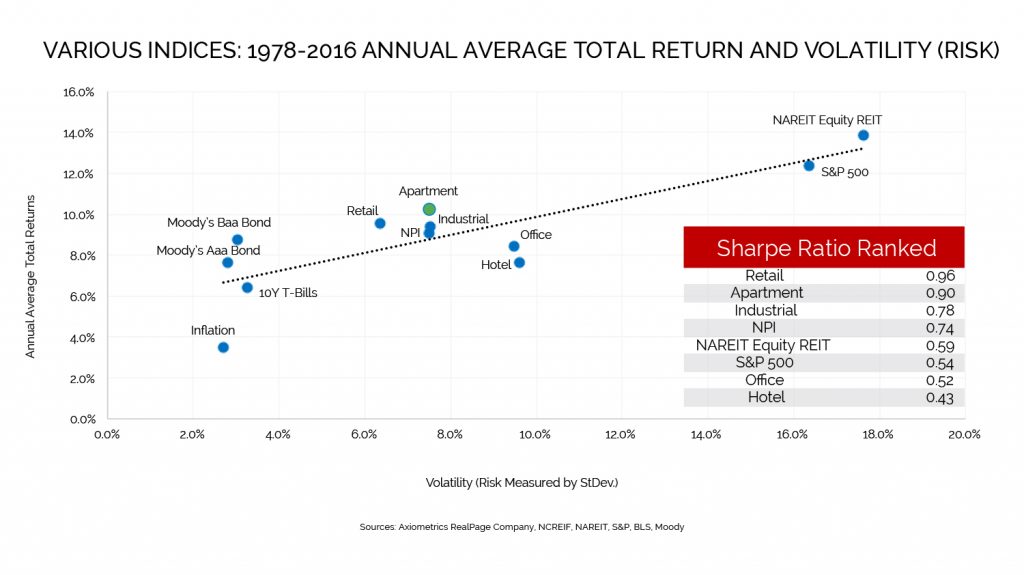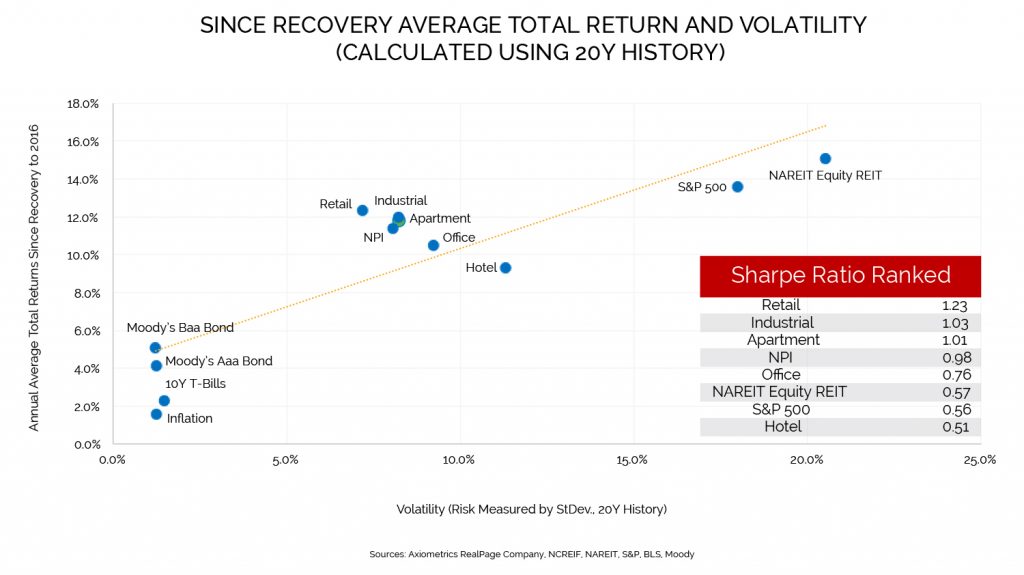Apartment Investments Continue to be Sound in Comparison

Apartment investments have generally been moderate-risk, high-return vehicles for the past several decades. Their value is solid, whether compared to other commercial real estate assets or to stocks, bonds and T-bills, even if transaction volume is down from one year earlier.
The chart below tracks various indices and property types using their average annual total returns since 1978 and their average volatility or risk as measured by the standard deviation. In addition, each variable’s Sharpe ratio is listed in descending order from best to worst.
The Sharpe ratio is a simple, but effective, measure of risk-adjusted return. It compares an investment’s excess return over the risk-free rate to its standard deviation of returns. The higher a fund’s Sharpe ratio, the better a fund’s returns have been relative to the risk it has taken on.

A glance at the chart shows that apartment investments have historically outperformed industrial properties and are well above office and hotels with higher average total returns and less risk. Apartments trail only retail for volatility or risk, as measured by the Sharpe Ratio. Compared to other investment options, apartment returns outperform bonds and T-Bills with somewhat higher risk, but are far below the average investment returns for the S&P 500 and NAREIT Equity REIT with their much higher risk volatility.
The fact that apartment leases usually last one year or less allows landlords to regularly change rent levels based on market and economic conditions, This flexibility and the larger number of leases (one for each unit) compared to other commercial real estate types provides some cushion for tenant churn and provides a more stable cash flow.
How have apartment investments fared since the Great Recession? The following chart is the same as the first chart, but with total investment returns for only the post-recession period. First, it is important to remember that each real estate type moves in its own cycle, and apartments were the first to recover from the Great Recession with robust returns in the early years of the recovery. Now, other property types are rising in their cycles, displacing apartments from the top spot. If this second chart were made in 2011, apartments would have led the other property types by a wide margin.

Total investment returns for apartment investments underperformed most other property types since 2012 after the initial burst in appreciation returns apartments experienced right after the recession. Post-recession, apartments have slipped to third on the Sharpe ratio list behind industrial and retail, but still maintain a large lead over office and hotel properties.
RealPage Analytics forecasts short-term slowing in apartment appreciation or capital returns, with moderate growth in income returns, followed by normalizing total returns after 2018. Net operating income growth looks solid for the foreseeable future after 2017’s mild pause, and cap rates will begin to rise slowly as rent growth steadies and the already-low national vacancy rate hovers close to 5%.
Apartments have historically been a good investment, with only moderate volatility or risk compared to other real estate types and even other investment options, and should continue to be a favored investment going forward.






